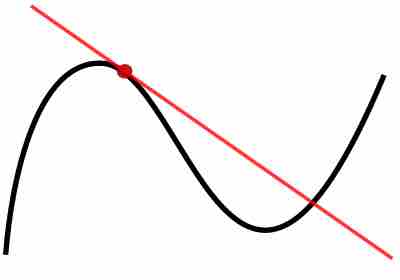The tangent line

Tangent to a Curve
The line shows the tangent to the curve at the point represented by the dot. It barely touches the curve and shows the rate of change slope at the point.
Suppose that a curve is given as the graph of a function,
As the point
Suppose that the graph does not have a break or a sharp edge at